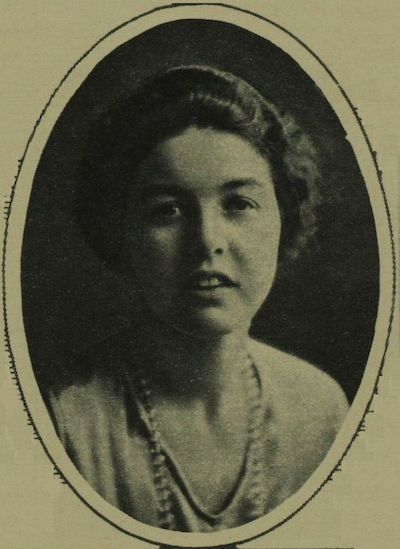1918 law meant women under 30 could be Members of Parliament but not vote in an election
A woman shall not be disqualified by sex or marriage for being elected to or sitting or voting as a Member of the Commons House of Parliament.
The act was passed on 21 November 1918, allowing women over the age of 21 to stand as Members of Parliament for the first time.
However, in February of that year, the Representation of the People Act 1918 only gave the right to vote to women over the age of 30 who met certain property qualifications. As a result, a number of women under the age of 30 stood for Parliament despite not yet having the right to vote in an election.
The most famous of these was Ursula Williams (1896 - 1979), pictured above, who stood as the Liberal candidate in Consett, Durham, in 1923. At 27 years old, she was the youngest woman to have stood for Parliament at that time.
Unsurprisingly, this young candidate attracted attention and some derision. One man interrupted her at a public meeting, saying, 'Oh, what do you know?' 'Many things,' Williams replied. 'Well, how many ribs has a pig got?' the man asked. 'I don't know offhand,' Williams replied, 'but if the gentleman will step up on the platform, I will be glad to count them.'
Despite increasing the Liberal vote, Ursula Williams was defeated by the Labour incumbent by 1,200 votes.
The first election in the UK where women were allowed to vote was the general election of 14 December 1918, when 8.5 million women were eligible to vote for the first time. In this election, 16 women exercised their right to stand as parliamentary candidates.
Many suffragists stood for election, including Christabel Pankhurst, Emmeline Pethick-Lawrence, and Charlotte Despard.

Christabel Pankhurst (1880 – 1958)
Christabel Pankhurst, co-founder of the Women’s Social and Political Union (WSPU) and daughter of Emmeline Pankhurst, stood as a Women's Party candidate in alliance with the Lloyd George/Conservative Coalition in the constituency of Smethwick. Despite gaining 47.8 per cent of the vote share, she was defeated by the Labour Party candidate by only 775 votes.
The only woman to be elected in 1918 was the Sinn Féin candidate for Dublin St Patrick, Constance Markievicz. However, in line with Sinn Féin's abstention policy, she didn't take her seat. Therefore, the first woman to take her seat in the House of Commons was Nancy Astor on 1 December 1919 after being elected as a Coalition Conservative MP for Plymouth Sutton.
You can read more about this in my post: Who were the first female members of Parliament in Britain?
It wasn’t until 1929 that the first woman became a cabinet minister and Privy Council member when Labour MP Margaret Bondfield was appointed Minister of Labour from 1929 to 1931.
In my novel, Death at Crookham Hall, Mrs Sybil Siddons becomes only the third woman to become an MP after winning a by-election in 1920.
However, in real life, it would be another year before the third woman was elected to Parliament after Margaret Wintringham won a by-election in September 1921.
You can read more about this in my post: Margaret Wintringham: The first female Liberal MP and third woman elected to Parliament.

